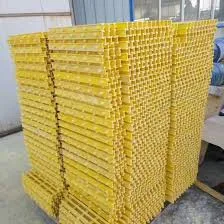
-
 Afrikaans
Afrikaans -
 Albanian
Albanian -
 Amharic
Amharic -
 Arabic
Arabic -
 Armenian
Armenian -
 Azerbaijani
Azerbaijani -
 Basque
Basque -
 Belarusian
Belarusian -
 Bengali
Bengali -
 Bosnian
Bosnian -
 Bulgarian
Bulgarian -
 Catalan
Catalan -
 Cebuano
Cebuano -
 China
China -
 China (Taiwan)
China (Taiwan) -
 Corsican
Corsican -
 Croatian
Croatian -
 Czech
Czech -
 Danish
Danish -
 Dutch
Dutch -
 English
English -
 Esperanto
Esperanto -
 Estonian
Estonian -
 Finnish
Finnish -
 French
French -
 Frisian
Frisian -
 Galician
Galician -
 Georgian
Georgian -
 German
German -
 Greek
Greek -
 Gujarati
Gujarati -
 Haitian Creole
Haitian Creole -
 hausa
hausa -
 hawaiian
hawaiian -
 Hebrew
Hebrew -
 Hindi
Hindi -
 Miao
Miao -
 Hungarian
Hungarian -
 Icelandic
Icelandic -
 igbo
igbo -
 Indonesian
Indonesian -
 irish
irish -
 Italian
Italian -
 Japanese
Japanese -
 Javanese
Javanese -
 Kannada
Kannada -
 kazakh
kazakh -
 Khmer
Khmer -
 Rwandese
Rwandese -
 Korean
Korean -
 Kurdish
Kurdish -
 Kyrgyz
Kyrgyz -
 Lao
Lao -
 Latin
Latin -
 Latvian
Latvian -
 Lithuanian
Lithuanian -
 Luxembourgish
Luxembourgish -
 Macedonian
Macedonian -
 Malgashi
Malgashi -
 Malay
Malay -
 Malayalam
Malayalam -
 Maltese
Maltese -
 Maori
Maori -
 Marathi
Marathi -
 Mongolian
Mongolian -
 Myanmar
Myanmar -
 Nepali
Nepali -
 Norwegian
Norwegian -
 Norwegian
Norwegian -
 Occitan
Occitan -
 Pashto
Pashto -
 Persian
Persian -
 Polish
Polish -
 Portuguese
Portuguese -
 Punjabi
Punjabi -
 Romanian
Romanian -
 Russian
Russian -
 Samoan
Samoan -
 Scottish Gaelic
Scottish Gaelic -
 Serbian
Serbian -
 Sesotho
Sesotho -
 Shona
Shona -
 Sindhi
Sindhi -
 Sinhala
Sinhala -
 Slovak
Slovak -
 Slovenian
Slovenian -
 Somali
Somali -
 Spanish
Spanish -
 Sundanese
Sundanese -
 Swahili
Swahili -
 Swedish
Swedish -
 Tagalog
Tagalog -
 Tajik
Tajik -
 Tamil
Tamil -
 Tatar
Tatar -
 Telugu
Telugu -
 Thai
Thai -
 Turkish
Turkish -
 Turkmen
Turkmen -
 Ukrainian
Ukrainian -
 Urdu
Urdu -
 Uighur
Uighur -
 Uzbek
Uzbek -
 Vietnamese
Vietnamese -
 Welsh
Welsh -
 Bantu
Bantu -
 Yiddish
Yiddish -
 Yoruba
Yoruba -
 Zulu
Zulu
frp step
Understanding FRP and Its Step-by-Step Implementation
Fiber Reinforced Polymer (FRP) composites have become increasingly popular in various engineering fields due to their excellent strength-to-weight ratio, corrosion resistance, and design flexibility. This article aims to break down the process of implementing FRP in structural applications into a series of comprehensible steps, providing a clearer understanding of its advantages and practical applications.
Step 1 Understanding the Basics of FRP
Before delving into the implementation of FRP, it is crucial to grasp what FRP is. FRP composites consist of a polymer matrix reinforced with fibers, typically made from materials such as glass, carbon, or aramid. These composites are known for their lightweight characteristics and high mechanical strength, making them suitable for a variety of applications ranging from civil engineering projects to aerospace components.
Step 2 Identifying the Requirements
The first practical step in implementing FRP in any project is identifying the requirements of the application. Engineers must evaluate factors such as load capacity, environmental conditions, durability, and aesthetic considerations. For instance, in civil engineering applications, FRP may be selected for its resistance to chemical corrosion, while in aerospace, weight savings could be the primary driver.
Step 3 Material Selection
After defining the requirements, the next step is selecting the appropriate type of FRP material. Different fibers and matrices provide varied properties; glass fibers offer good mechanical performance at a lower cost, while carbon fibers provide superior strength but at a higher price. Additionally, the choice of resin—whether epoxy, vinyl ester, or polyester—will impact the performance and suitability of the final composite for the intended application.
Step 4 Design and Engineering
frp step

Once the materials have been selected, engineers can move to the design phase. This involves precise calculations to ensure that the FRP component meets the defined structural requirements. Computer-aided design (CAD) software is often used to create detailed models of the FRP structure. During this phase, it is critical to consider factors such as load distribution, potential stress concentrations, and thermal expansion.
Step 5 Manufacturing Process
After finalizing the design, the FRP components need to be manufactured. There are various manufacturing techniques, including hand layup, filament winding, and resin transfer molding. The chosen method often depends on the complexity and scale of the project. Proper curing of the resin is essential to achieve the desired mechanical properties; this may involve using heat or chemical catalysts to expedite the process.
Step 6 Quality Control
Quality assurance is a vital step in the implementation of FRP. Rigorous testing methods, such as tensile strength tests, impact resistance tests, and moisture absorption tests, are necessary to ensure that the final product meets the established specifications. Inspections can prevent costly failures and ensure long-term performance.
Step 7 Installation
The final phase involves the installation of the FRP components into the intended structure. Proper installation techniques are crucial, especially when bonding FRP to existing structures or integrating it into composite systems. It is essential to follow guidelines for surface preparation, adhesive use, and curing times to ensure a strong bond and overall structural integrity.
Conclusion
FRP offers numerous advantages in structural applications, including reduced weight, enhanced durability, and resistance to environmental factors. By following a systematic approach—understanding FRP, identifying requirements, selecting materials, designing, manufacturing, conducting quality control, and ensuring proper installation—engineers can effectively implement FRP into their projects. As technology progresses, the use of FRP is expected to expand, providing even more innovative solutions across various industries. Understanding the steps involved in FRP implementation paves the way for maximizing its potential while minimizing risks associated with material failure.









